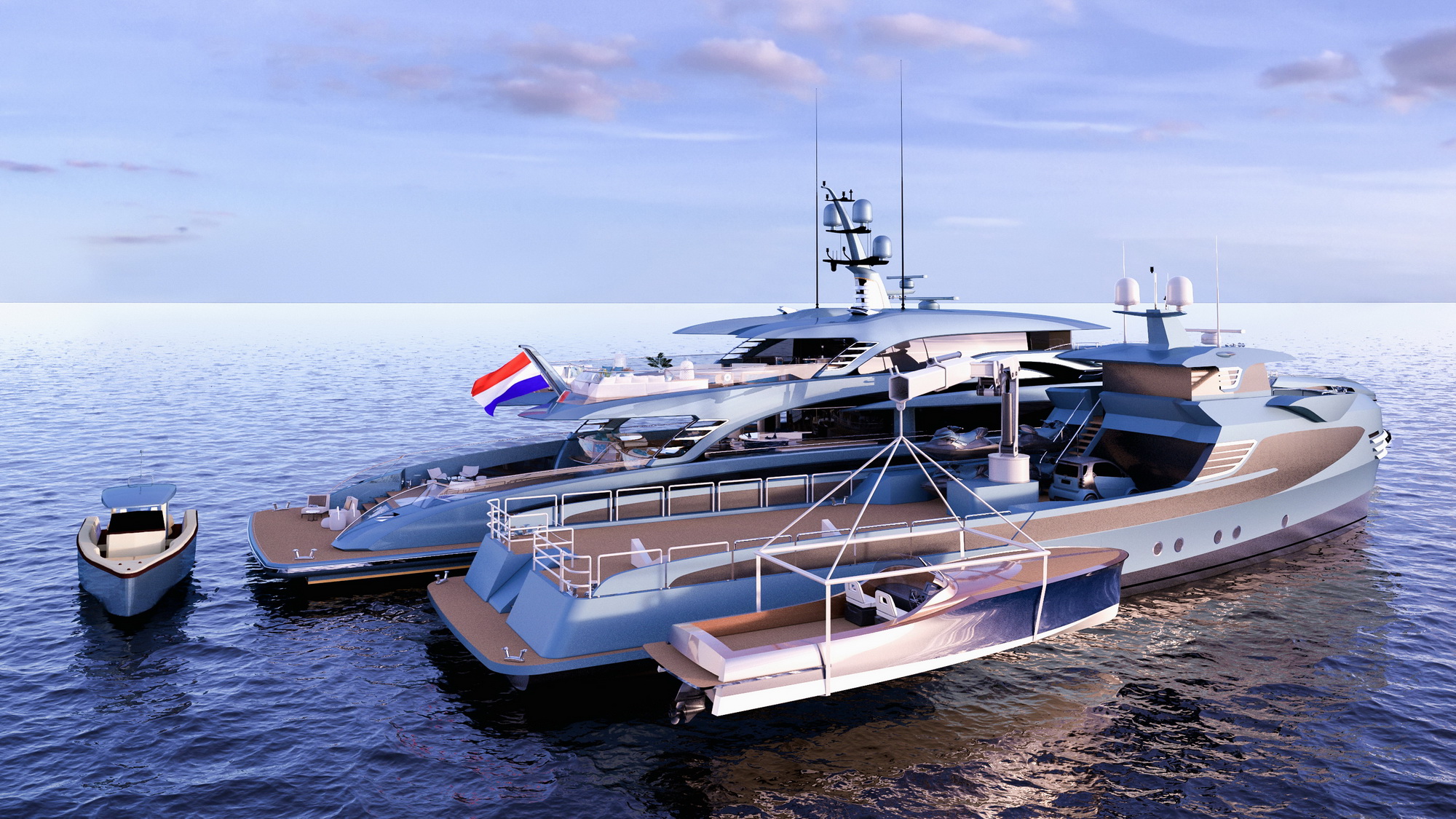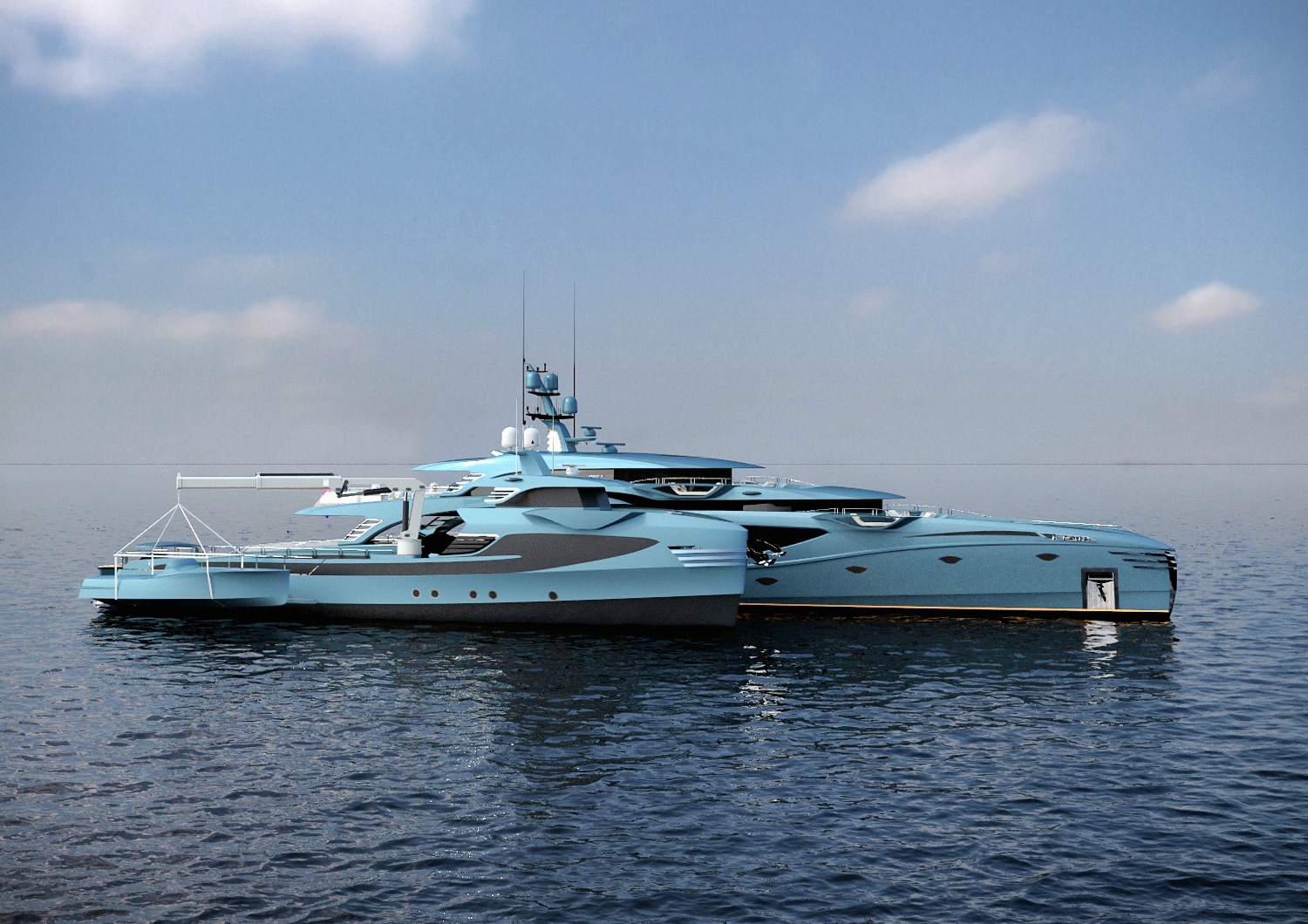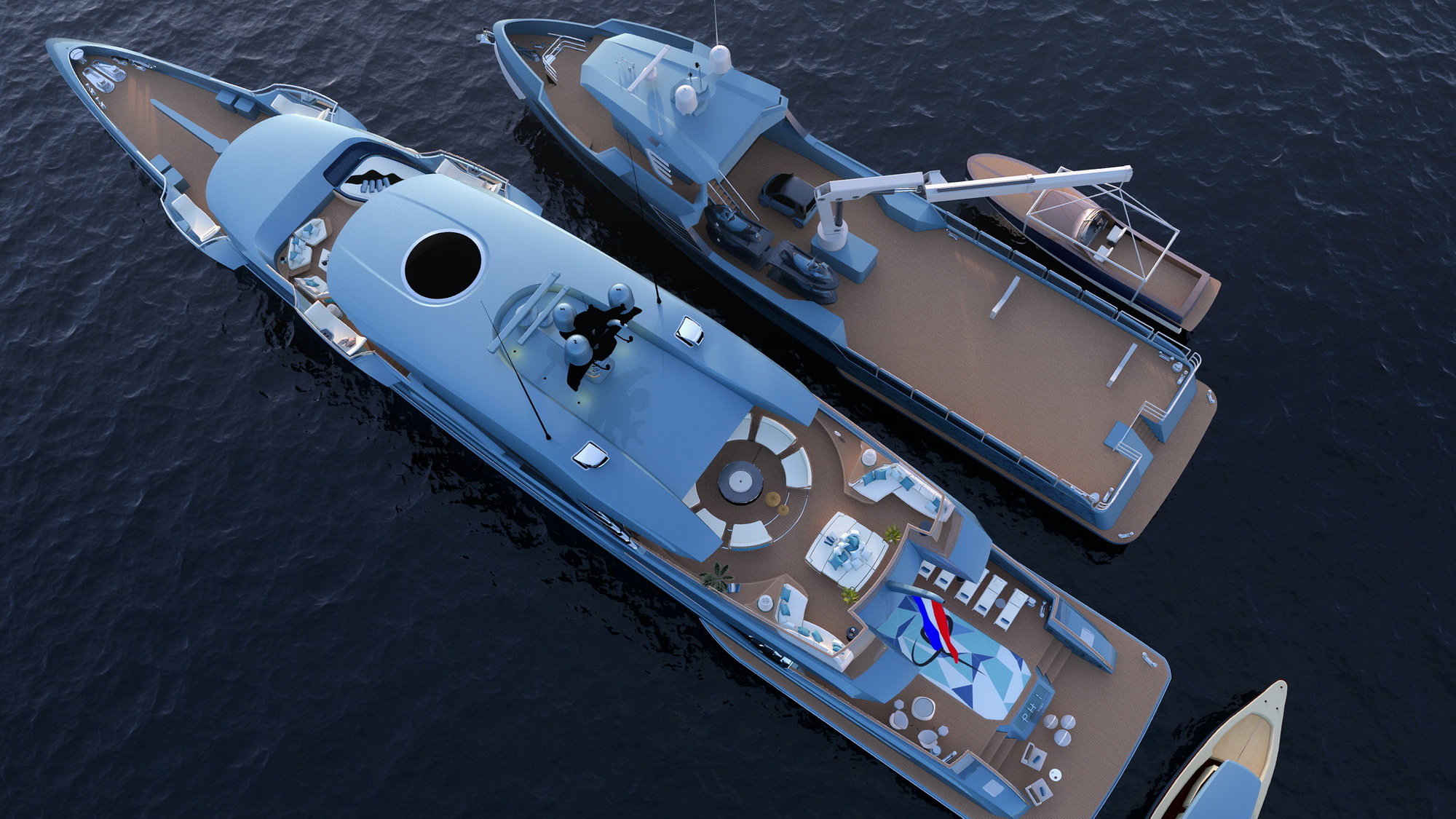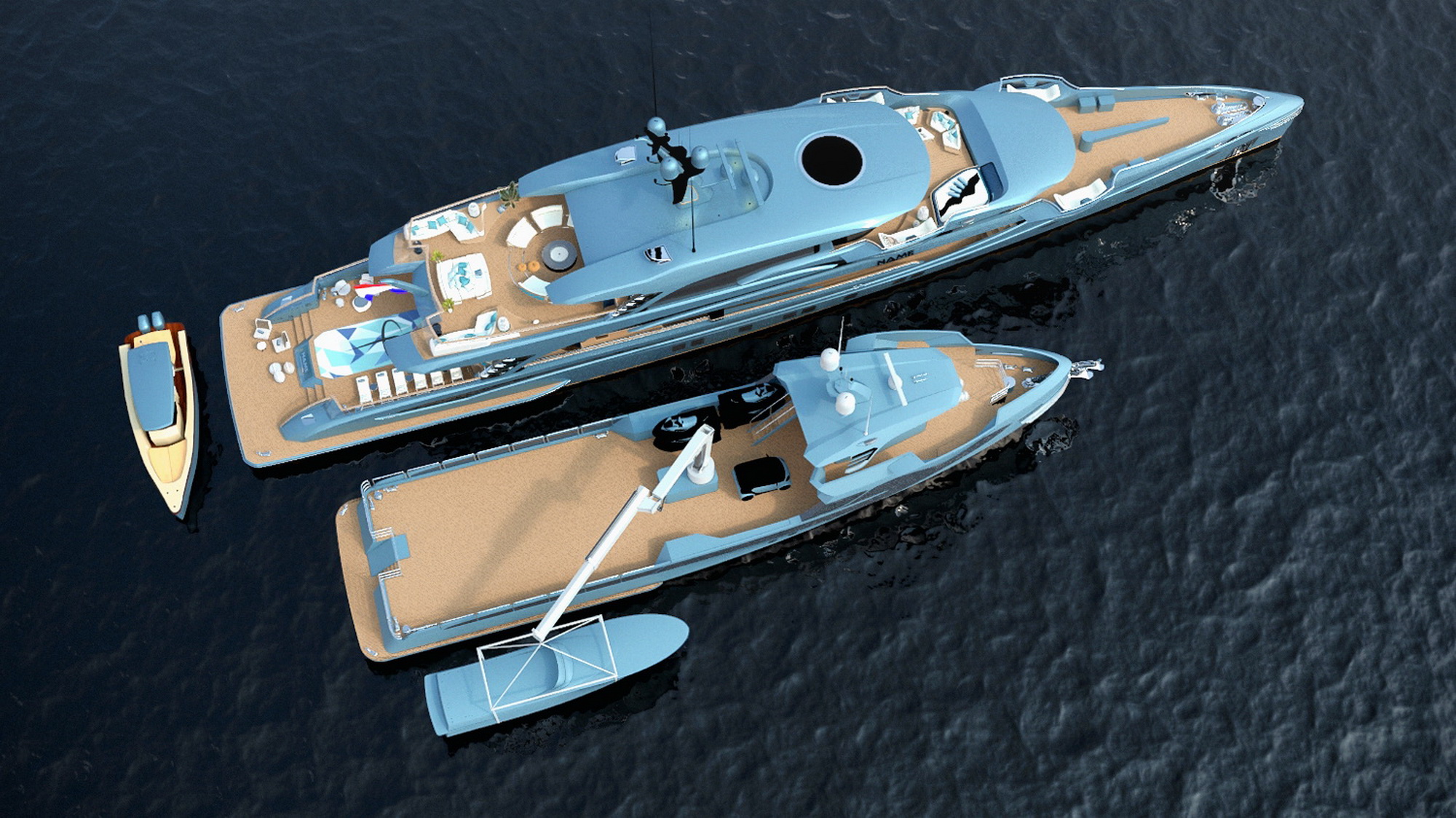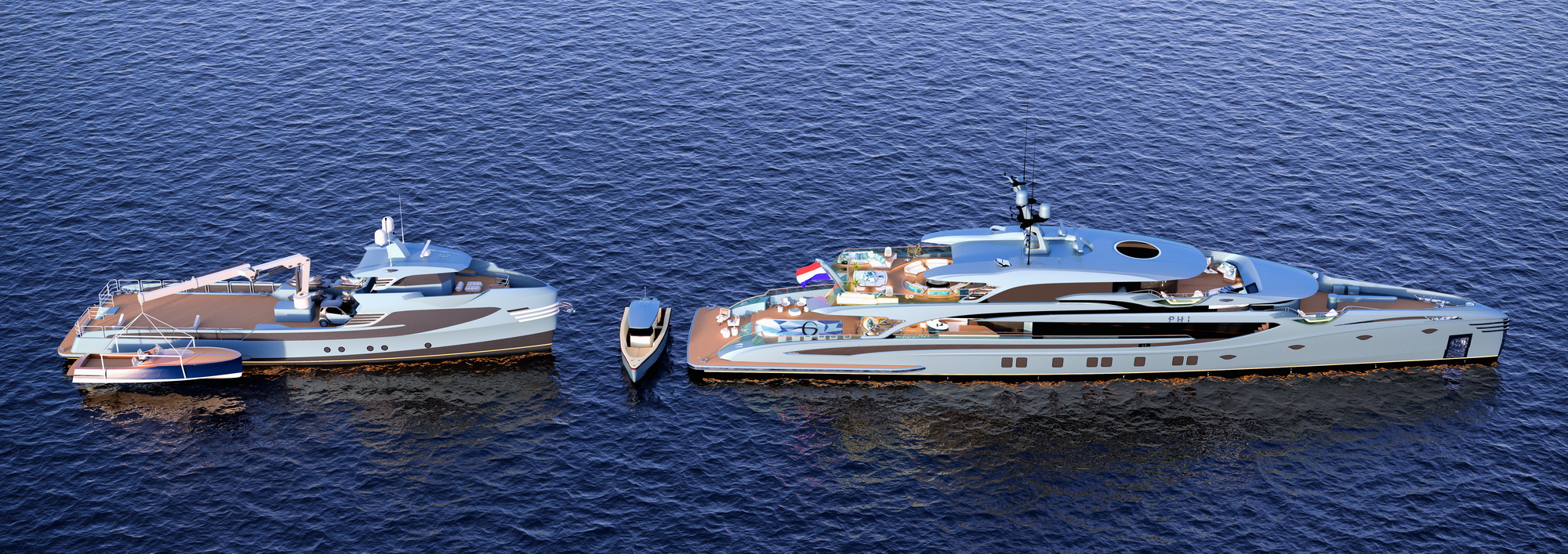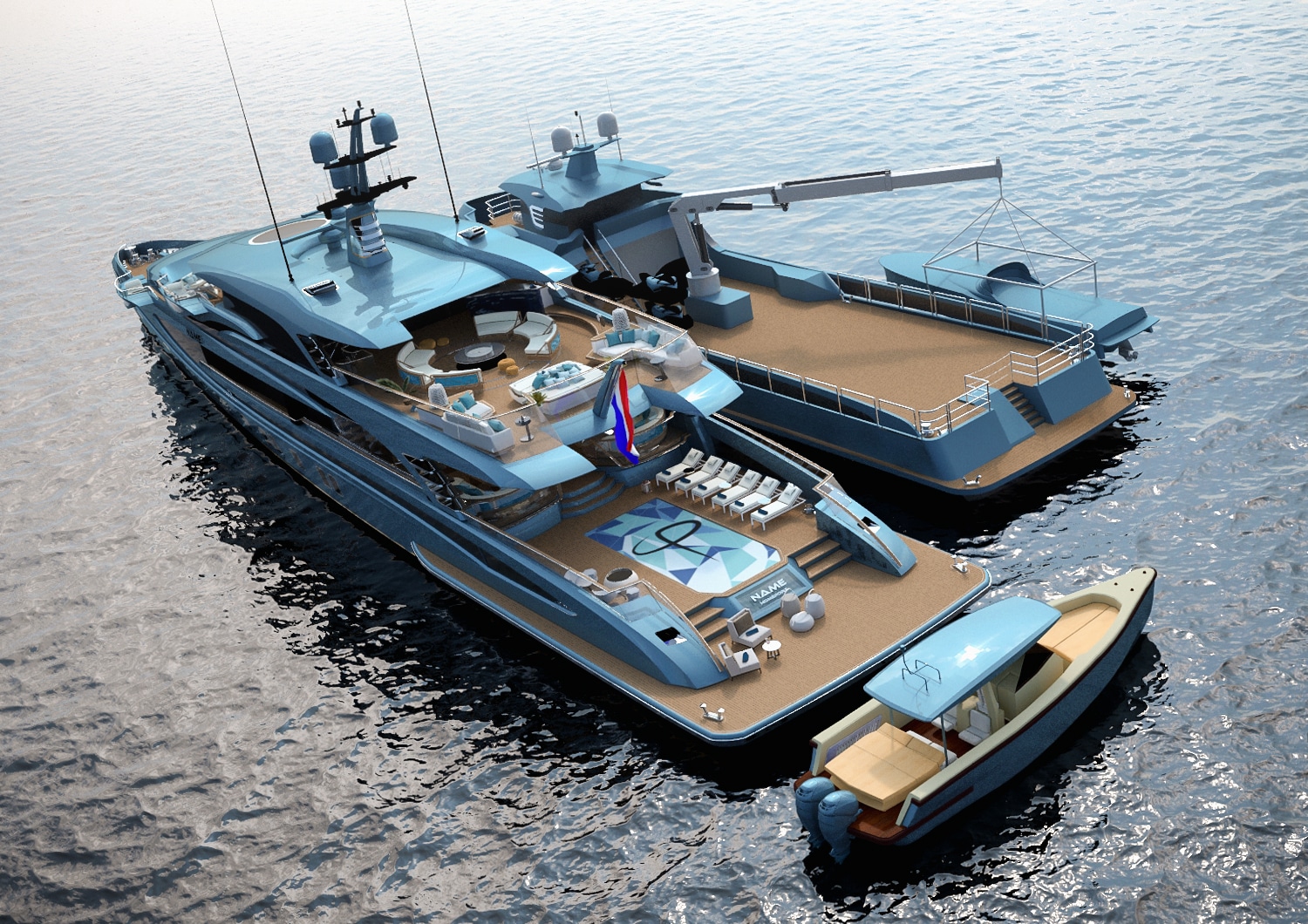“Project PHI: is this the perfect owner’s approach?” at The Superyacht Forum 2021
Some quotes about the benefits by Guy Booth, owner’s representative and project manager of PHI:
“Let’s start with guest spaces. PHI carries twelve passengers in the level of space and comfort you’d expect on a superyacht. The most common comment from anyone who steps aboard is how big and open the afterdeck is – it has the relaxing and entertaining space of an 80 to 90m / 260 to 295ft boat.”
“From the stern it’s 30m / 100ft to the back doors and 10m / 30ft wide, so it’s huge. And that’s only the main deck. From the interior dining table you can open the glass doors so wide it becomes an outside table.”
“The fleet thing, the reason we did under 500 GT– apart from the fact that it was innovative and hadn’t been done before – was because PHI does not have lots of tenders, opening hull doors, cranes, garages, technical spaces and all of the accompanying hydraulic packs and power equipment to open all these hatches and move the cranes, we also made more space on the boat for guests and all the crew on the boat are dedicated to their guests.”
“Boat 2 offers huge flexibility to acquire, rent or buy different boats, toys and equipment (to suit owners’/ guests’ requirements) there’s no issue with size of hatches or space for storage on PHI.”
“Phantom is faster than PHI – PHI is pretty fast but Phantom is faster – and she has a range of 8,500 nm. The reason she is designed to be faster is that, when guests have finished their activities, PHI can start the engines and go. Retrieving, cleaning and stowing the toys takes a little time, but Phantom can be still there at the evening’s anchorage ready and waiting to welcome her mothership when she arrives.”
“Eleven crew on PHI, six on Phantom – an 80m would run with twice that number. Build costs were significantly lower as well as initial and annual compliance costs. In the last decades we’ve seen more and more really big yachts delivered and they’re sitting at anchor in the Bay of Cannes all the time. There are very few ports they can get into. The boss (of PHI) prefers smaller, remote places closer to the coast, closer to the beach rather than anchored half a mile out into the bay and always relying on a tender. All of these things together inform the logic behind two smaller boats. The crew will move between the boats as well – this upskills everybody and, in terms of a value exercise, the client has got a huge bang for his buck. “

